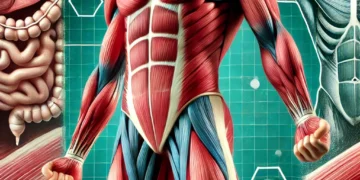
Introduction
The world is filled with unbelievable facts that push the boundaries of what we think is possible. From extraordinary feats of nature to mind-bending discoveries in science and history, these facts showcase the awe-inspiring complexity of life on Earth. In this blog, we’re diving deep into astonishing facts that you might find hard to believe, yet they’re entirely true!
Whether you’re a curious learner, trivia enthusiast, or just someone who loves surprising information, you’ll find plenty of unbelievable facts here to entertain and inspire.
Nature’s Unbelievable Facts

The Immortal Jellyfish: A Creature That Defies Death
One of the most unbelievable facts about nature is the existence of the immortal jellyfish, scientifically known as Turritopsis dohrnii. This tiny sea creature has a unique ability to revert to its juvenile state when under stress, essentially restarting its life cycle. Imagine if humans could regenerate in the same way! This potential for biological immortality is not just a myth; it’s a real-life phenomenon that scientists are studying intensively. By learning more about how the immortal jellyfish “resets” its life, we might uncover secrets about aging and regeneration that could lead to breakthroughs in medicine.
Trees Can “Talk” to Each Other
Through an underground network known as the “Wood Wide Web,” trees share resources, warn each other of dangers, and even assist struggling neighbors. This fascinating network functions with the help of fungi that connect root systems across the forest floor. Through this underground “social network,” trees send nutrients to those that are sick or in need, helping to maintain the health of the forest. This interconnectedness provides insight into how plants communicate in ways that we are only beginning to understand, reshaping our view of forests as simply groups of isolated trees.
Antarctica Has a Waterfall That Looks Like Blood
Antarctica, known for its icy landscapes, is also home to a bizarre natural wonder: Blood Falls. This red waterfall flows from the Taylor Glacier and is colored by iron-rich saltwater that oxidizes when it contacts the air. For over a century, this phenomenon puzzled scientists who initially thought it was caused by red algae. As more research was conducted, it became clear that an ancient, isolated lake under the glacier was the source of the iron-laden water. Blood Falls serves as a stunning reminder of Earth’s hidden geologic processes that can create surreal and hauntingly beautiful sights.
Lightning Strikes 100 Times per Second Globally
At any given moment, approximately 100 lightning strikes occur every second around the world. This statistic translates to roughly 8 million strikes per day! Lightning, which can heat the surrounding air to temperatures five times hotter than the surface of the sun, is a powerful reminder of nature’s unpredictable might. Although only about 10% of lightning strikes result in human fatalities, the sheer number of strikes highlights the importance of understanding and respecting these natural occurrences.
Unbelievable Facts About the Human Body

Humans Glow – But It’s Invisible to the Naked Eye
Believe it or not, the human body emits a faint glow caused by metabolic reactions. Although this bioluminescence is too weak to be seen by the naked eye, specialized cameras can capture the light emitted by humans, especially around our faces. This faint glow fluctuates throughout the day, peaking in the afternoon. Our bodies are constantly converting food into energy, producing byproducts that release photons in the process. This invisible light is a subtle reminder of the incredible metabolic processes taking place within us every second.
Your Stomach Gets a New Lining Every Few Days
Our stomachs produce acids strong enough to dissolve metal, requiring a new stomach lining every 3 to 4 days, a testament to our body’s resilience. This high acidity helps us break down food and absorb nutrients, but without regular regeneration, the lining would suffer significant damage. This ability showcases the remarkable adaptability of human anatomy, which balances efficiency with protection.
The Human Brain’s Storage Capacity Exceeds the Internet
Our brains are capable of storing up to 2.5 petabytes of data, far exceeding the capacity of some of the largest data centers. This storage capacity is comparable to 2 million gigabytes and allows us to retain an enormous amount of information. The brain’s impressive storage is largely due to the intricate structure of neurons, which form complex networks to store and retrieve memories. Scientists continue to study how this “biological computer” works, as unlocking the secrets of memory could lead to significant advancements in AI and computational technology.
Fingertips Have Their Own Unique Print, Even Among Twins
We often hear about fingerprints as a unique identifier, but did you know that even identical twins have different fingerprints? This is because fingerprints form based on a combination of genetic and environmental factors, like movement within the womb. This intricate blend of variables ensures that no two people have the exact same fingerprints, making them a highly reliable form of identification.
Unbelievable Facts About Space

There’s a Planet Where It Rains Diamonds
Planets like Jupiter and Saturn have extreme atmospheric pressures that create diamond rain, making it one of the most astonishing facts about our universe. On these gas giants, carbon atoms are compressed into diamond crystals, which eventually rain down through the planet’s dense atmosphere. This phenomenon might sound like a science fiction fantasy, but it highlights the range of conditions that exist in the universe beyond Earth.
The Moon Has Moonquakes
Just as Earth has earthquakes, the moon experiences “moonquakes” caused by tidal forces from Earth’s gravitational pull. Unlike earthquakes, which typically last for a few seconds to minutes, moonquakes can last up to an hour due to the moon’s unique geology. This seismic activity provides clues about the moon’s internal structure, allowing scientists to gain a better understanding of celestial bodies’ evolution.
A Day on Venus Is Longer Than Its Year
Venus has one of the strangest rotations in the solar system. It takes about 243 Earth days for Venus to complete one full rotation on its axis, but only 225 Earth days to orbit the sun. This unusual rotation, combined with its thick, toxic atmosphere, makes Venus one of the most hostile and alien worlds in our solar system.
Space Smells Like Seared Steak
Astronauts returning from spacewalks often report a smell on their suits reminiscent of seared steak, hot metal, or welding fumes. Scientists believe this unique aroma is caused by the chemical reactions of particles in space that interact with the human body and space gear, creating new compounds. This strange fact adds a sensory dimension to our understanding of outer space.
Unbelievable Historical Facts

Cleopatra Lived Closer to the Invention of the iPhone Than the Building of the Pyramids
Cleopatra, who lived around 2,000 years ago, was closer in time to modern technology than the construction of the Great Pyramid of Giza 4,500 years ago. This timeline fact shifts our perspective on ancient history and reminds us of the rapid pace of human innovation.
The Shortest War in History Lasted 38 Minutes
In 1896, the British and the Sultanate of Zanzibar fought a war that lasted only 38 minutes. The quick resolution was due to overwhelming British firepower, which quickly forced the Sultan to surrender. This brief conflict highlights how swiftly events can unfold and underscores the stark power imbalances that have often shaped history.
Unbelievable Facts About Animals

Cows Have Best Friends
Studies reveal that cows form strong social bonds with specific individuals and experience less stress when they’re with their preferred companion. This discovery challenges the way we view animals, highlighting the complexity of their emotional lives.
Octopuses Have Three Hearts
The octopus has three hearts: two pump blood to the gills, while the third pumps it to the rest of the body. This remarkable anatomy allows octopuses to navigate diverse underwater environments, underscoring their adaptability and uniqueness in the animal kingdom.
Rats Can Laugh
Rats emit high-pitched “giggles” that are inaudible to humans when they’re tickled or playing. Scientists have found that rats enjoy this type of interaction, which is similar to laughter in humans. This discovery highlights the deep similarities between humans and animals, offering insight into the evolution of social behaviors across species.
Tardigrades Can Survive in Space
Tardigrades, also known as water bears, are tiny creatures that can survive extreme conditions, including exposure to space. These microscopic animals have been sent to space on several occasions, and they survived vacuum, intense radiation, and freezing temperatures. Their resilience has inspired researchers to study their DNA for insights that could help protect humans in harsh environments.
Unbelievable Facts About Earth

There’s a Desert in Antarctica
Despite being covered in ice, Antarctica’s low precipitation qualifies it as a desert, making it the largest desert on Earth. This cold, dry environment is one of the most inhospitable places on the planet and offers unique insights into extreme survival.
Mount Everest Is Not the Tallest Mountain in the World
While Mount Everest is the highest point above sea level, Mauna Kea in Hawaii is the tallest mountain when measured from its base, which is located on the ocean floor. This Hawaiian mountain reaches over 33,000 feet from its base, surpassing Everest’s height.
Earth Has “Mini-Moons”
Aside from its primary moon, Earth occasionally captures small asteroids in its gravitational field, which temporarily orbit as “mini-moons.” These small objects highlight the dynamic nature of Earth’s interaction with nearby celestial bodies.
The Impact of Unbelievable Facts on Our Perspective
Learning these unbelievable facts reshapes how we view the world, showing that life, nature, and the universe are filled with endless mysteries. Such facts remind us to approach the world with curiosity and wonder.
From animals with unexpected emotions to natural phenomena that defy expectations, unbelievable facts challenge us to expand our horizons and appreciate the complexities of our world.
Conclusion
The unbelievable facts covered here only scratch the surface of what makes our world so fascinating. As we continue to explore, new discoveries will add to this list, offering even more reasons to marvel at the intricacies of life on Earth. Embracing these truths helps us stay curious, inspired, and open to the wonders around us.































